Advertisement
Grab your lab coat. Let's get started
Welcome!
Welcome!
Create an account below to get 6 C&EN articles per month, receive newsletters and more - all free.
It seems this is your first time logging in online. Please enter the following information to continue.
As an ACS member you automatically get access to this site. All we need is few more details to create your reading experience.
Not you? Sign in with a different account.
Not you? Sign in with a different account.
ERROR 1
ERROR 1
ERROR 2
ERROR 2
ERROR 2
ERROR 2
ERROR 2
Password and Confirm password must match.
If you have an ACS member number, please enter it here so we can link this account to your membership. (optional)
ERROR 2
ACS values your privacy. By submitting your information, you are gaining access to C&EN and subscribing to our weekly newsletter. We use the information you provide to make your reading experience better, and we will never sell your data to third party members.
Awards
2019 Priestley Medalist K. Barry Sharpless works magic in the world of molecules
The organic chemist’s uncanny ability to think like a molecule has made him a master at inventing useful reactions
by Bethany Halford
March 31, 2019
| A version of this story appeared in
Volume 97, Issue 13
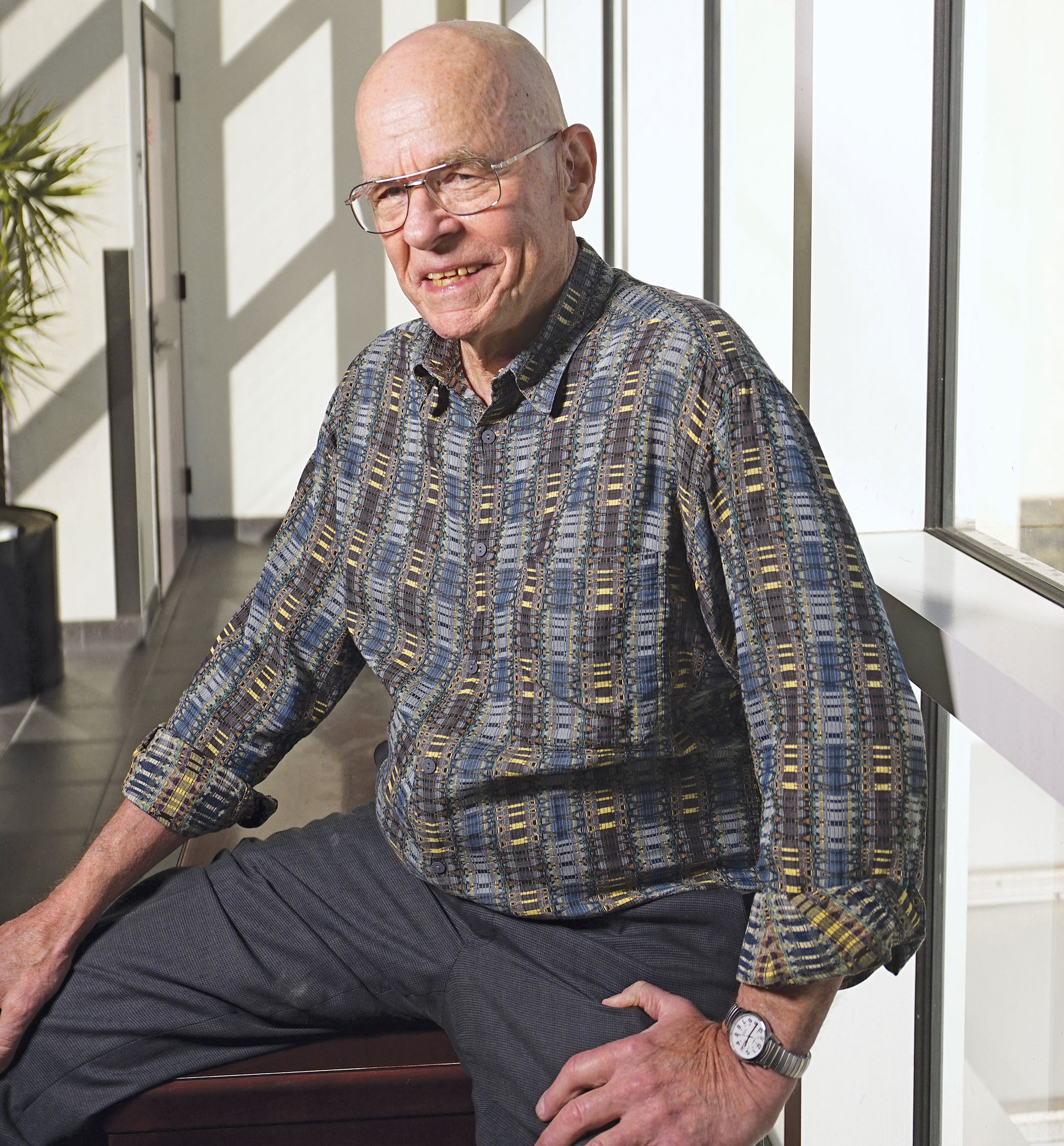
Credit: Sandy Huffaker
The best way to get an idea of what it’s like to interview K. Barry Sharpless is to play pinball. Once his mind winds up, you never know exactly where the conversation will bounce to. Topics of discussion can jump from fishing on the Jersey shore to acetylcholinesterase inhibitors to his beloved pet mutt, Batty, in a matter of just minutes. And Sharpless will be the first to admit that his train of thought isn’t necessarily linear. “I usually don’t answer questions,” he admits. “I don’t speak in full sentences, and I have a hell of a time writing.”
In brief
This year’s Priestley Medalist, K. Barry Sharpless, is a master at getting molecules to do his bidding. He’s pioneered two influential areas of chemistry: asymmetric catalysis and click chemistry. And he’s inspired legions of chemists. Read on to find out how this molecule maker went from fishing in Manasquan, New Jersey, to winning the Nobel Prize in Chemistry.
Sharpless’s friends, former students, and colleagues all reach for words like “eccentric” and “unconventional” when asked to describe him. But the description they all eventually arrive at is that he “thinks like a molecule.” The phrase seems to have originated with Sharpless himself—he advised students during his time teaching undergraduate organic chemistry to do just that. Those who know Sharpless say it sums up his uncanny ability to know how molecules will behave and how he can get them to do his bidding.
COVER STORY
Meet 2019 Priestley Medalist K. Barry Sharpless, the molecule whisperer
During a career that spans almost 50 years, this chemical intuition has earned Sharpless, who is W. M. Keck Professor of Chemistry at Scripps Research in California, a list of awards—including half the 2001 Nobel Prize in Chemistry—that fills two single-spaced pages on his curriculum vitae. This year he’s being recognized with the 2019 Priestley Medal, the American Chemical Society’s highest honor, for “the invention of catalytic, asymmetric oxidation methods, the concept of click chemistry and development of the copper-catalyzed version of the azide-acetylene cycloaddition reaction.”
“Receiving the Priestley came as a real bolt from the blue and is something I never expected,” Sharpless says. Unlike many past Priestley Medalists, he’s shied away from science politics and from serving as a chemistry journal editor. “I am just a chemist who’s spent my life trying to make it possible for chemists to do better chemistry,” he says.

Prologue
Sharpless didn’t foresee a career in the central science. Although he was a pre-med major until his last semester in college, he was driven by his love of the sea and harbored thoughts of becoming the captain of a fishing boat—just like his uncle Dink, who Sharpless describes as the black sheep of the family.
Sharpless grew up in Philadelphia but spent the summers of his youth exploring the Manasquan River where it meets the New Jersey shore. His family had a cottage nearby, and he says his mother would let him roam free. “That’s where I learned about life, about everything that I’m curious about,” he says. As Sharpless grew older, he began to sail with his uncle Dink, catching fish on the Manasquan.


Sharpless attended a Quaker school in Philadelphia that he credits with teaching him to read and speak German (a skill he’d find useful later for combing the old chemical literature). But he says he spent most of his time daydreaming about fishing. “I didn’t learn much in school except what I needed to do to get As,” he remembers.
Sharpless began his undergraduate studies at Dartmouth College in the fall of 1959. As a freshman, he broke his leg in a skiing accident and spent the whole winter term hobbling to the library on crutches to study organic chemistry. “Not only did I like it, but I could remember everything,” he says. “I don’t think there was a question they could ask me that I couldn’t answer.”
“He was the top student among the 135 Dartmouth undergraduates in the first course I taught directly out of graduate school in the fall of 1960,” says Tom Spencer, Dartmouth chemistry professor emeritus. “As a novice, I had no basis of comparison to appreciate how talented this obviously very bright and manically energetic young man was, but fortunately I did not discourage him from pursuing a career in science.”
Those were the days when chemical stockrooms were essentially open to students, Spencer says, and Sharpless couldn’t resist the chemicals’ siren call.
“People like me, if we get into a lab, then we’ve got a chance to really fall in love,” Sharpless says. “I memorized all the chemicals in the stockroom—the smell, the taste,” he says in a tone that makes it tough to tell if he’s joking. Whether he’s serious or not, this type of sensory experience isn’t recommended, safety-wise.
But Sharpless never stayed at Dartmouth during the summer to do research. “I loved fishing more,” he says.
Sharpless’s father, a surgeon, “had assumed that Barry would go to medical school and would follow in his footsteps,” Spencer says. But seeing Sharpless’s talent in chemistry, Spencer encouraged him to pursue a graduate degree in the field. “One day his father called me and said, ‘What are you doing to this boy?’ ” Spencer remembers. “His father wondered who the hell I was and why I was trying to mess with Barry’s life. But when I described Barry’s talents, his father backed off and later became an enthusiastic supporter.”
For graduate school, Sharpless moved west to Stanford University, where he worked on cholesterol biosynthesis with Eugene E. van Tamelen as a graduate student and organometallic chemistry with James P. Collman as a postdoctoral fellow. But the most influential event to occur during Sharpless’s time at Stanford was when he met Jan Dueser at a beach party. “Jan was the date of Doug Walgren, one of my friends from Dartmouth,” Sharpless recalls.
The two eloped a year and a half later, in 1965, and Sharpless credits her with anchoring him and for a good deal of his success. For example, much of the eloquent writing that appears under K. Barry Sharpless’s byline, such as his Nobel autobiography and a story describing how he lost his vision in one eye during an explosion because he wasn’t wearing safety goggles, was, in fact, written by Jan.
(A funny aside: Walgren spent seven terms in the US House of Representatives, elected from Pennsylvania’s 18th District. He and Sharpless remained friends, and when Sharpless won the Nobel Prize in 2001, Walgren called and Jan answered. He said to her, “Just think, Jan, if I had married you, maybe I could have been president.”)
Advertisement
A dramatic first act with asymmetric oxidations
In 1969, Sharpless moved to Massachusetts to study enzymology as a postdoc in Konrad E. Bloch’s lab at Harvard University. The following year, he became an assistant professor at the Massachusetts Institute of Technology, where he spent seven years before taking a faculty position at Stanford. Three years later, though, he rejoined the Chemistry Department at MIT.
At Stanford, Sharpless had been trying to develop ways to asymmetrically oxidize double bonds, transforming the flat C=C landscape into only one of two possible oxygen-containing 3-D shapes. He remembers feeling that his work had stagnated. “It was a month after I told them I was leaving to go back to MIT that we got the breakthrough on asymmetric epoxidation,” he says. Had his group made the discovery a month earlier, he says, “I probably wouldn’t have left.”

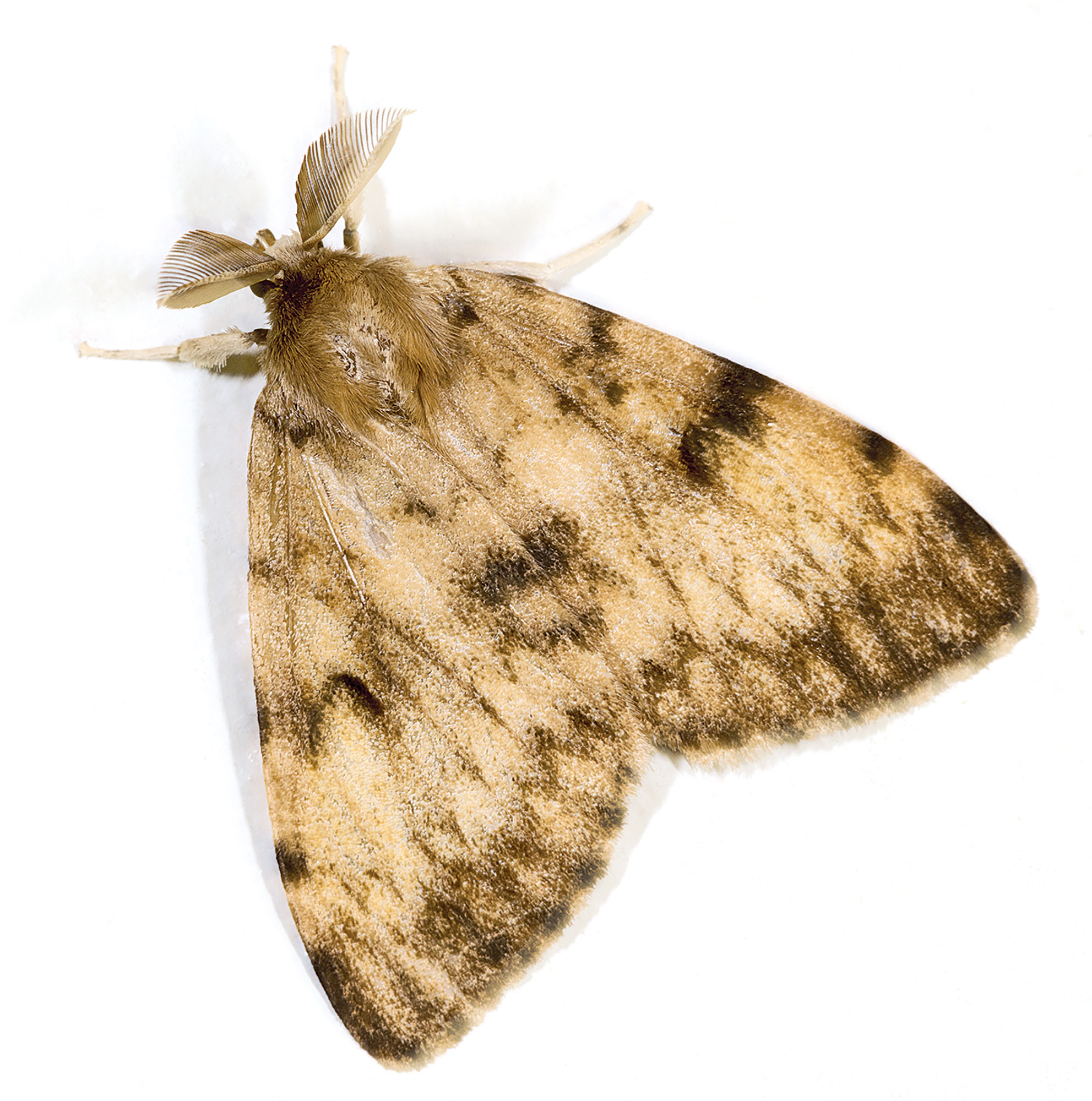
Sharpless showed the usefulness of asymmetric epoxidation by harnessing it to synthesize the gypsy moth pheromone (+)-disparlure.
Credit: Didier Descouens/Wikimedia Commons
After years of development in Sharpless’s lab, the reaction he and his postdoc Tsutomu Katsuki eventually discovered was the Sharpless asymmetric epoxidation, which uses titanium compounds and chiral ligands to transform primary and secondary allylic alcohols into 2,3-epoxyalcohols in an enantioselective manner. The reaction showed that it was possible to use metals in a predictable way to oxidize double bonds with high enantioselectivity and was part of the work cited by the Nobel committee. To demonstrate the reaction’s utility, Sharpless’s group used it to make (+)-disparlure, the chemical that female gypsy moths use as a sex attractant.
The pheromone apparently has some staying power. A major gypsy moth invasion occurred in New England in 1980, while the Sharpless lab was relocating from Stanford to MIT. When some of the Sharpless group members got off the plane in Boston, moths attacked their “laundered but still alluring clothing” that they had worn in the lab during (+)-disparlure’s synthesis, Jan Sharpless recalls.
News of the gypsy moth attack reached Kathy Halbreich, who was director of the Albert and Vera List Visual Arts Center at MIT at the time. In 1985, performance artist Thomas Kovachevich was going to be in residence at MIT, and Halbreich asked Sharpless if a collaboration might be possible.
The resulting performance piece was held in a steeply raked auditorium at MIT. On a big, square plinth in the center of the auditorium, Sharpless and Kovachevich rippled large sheets of tissue-like paper to which (+)-disparlure had been applied.
“The idea was that he would release all these gypsy moths at the top of the room and he was going to show how they make a beeline for these papers coated with the pheromone,” says Rick Danheiser, a chemistry professor at MIT.
The moth pupae were ordered from an army research lab so that they would hatch on the day of the performance, Jan recalls. “They hatched right on schedule, but sadly, their little wings weren’t fully developed, so the guys couldn’t fly,” she says. “Not to worry. Sex being what it is, the fellas were released at the top of each aisle and they scrabbled and tumbled their way down the steps, then tried hop-flying from the floor up to the platform.”
Sharpless had performed a similar demonstration for his undergraduate organic chemistry class a year earlier, recalls Danheiser. On that occasion, the male moths’ wings had fully formed, but the (+)-disparlure had been blown throughout the room by the ventilation system. Once released, the gypsy moths were frantically flying everywhere, Danheiser remembers. They were landing on the students, and panic ensued.
Although the gypsy moth display didn’t go as planned, Danheiser says it was demonstrative of Sharpless’s teaching style. “Barry was always trying to find some sort of way of entertaining the class but also doing it in an informed way,” Danheiser says. “His passion for chemistry was apparent in his lectures, and it was infectious.”
The asymmetric epoxidation elicited incredible excitement from the chemistry community, says Harvard’s Eric Jacobsen, who was a postdoc in Sharpless’s lab from 1986 to 1988. “It wasn’t the first reaction that used metals in a useful way for organic synthesis, but it was really the first reaction that allowed chemists to control stereochemistry in a predictable way,” he says.
While Jacobsen was at MIT, he worked with Sharpless on the reaction that is now known as the Sharpless asymmetric dihydroxylation. In this transformation, an alkene reacts with osmium tetroxide in the presence of a chiral quinine ligand to form a single diastereomer of a vicinal diol, in which there are two –OH groups on adjacent carbons. It’s another one of the chirally catalyzed oxidation reactions that garnered Sharpless the Nobel Prize.
“Barry gets incredibly excited about things when a result catches his attention, but it isn’t always clear to people in the lab what that will be,” Jacobsen says. “I was very fortunate because I was able to work on something that did get his attention. And once you got his attention, it was incredible. It was amazing the way he could just dive into a problem and become absorbed by it.”
Jacobsen recalls one Thanksgiving Day during his postdoc when he was visiting his mother in New York City. “The phone rings, my mother picks up, and it’s Barry Sharpless,” he recalls. “She knew enough about working in lab to know that if your adviser is calling you on Thanksgiving Day, it must be a bad thing—there’s a fire in my hood or something.” Jacobsen nervously took the phone and found that Sharpless simply wanted to talk about chemistry. “He just wanted to follow up on a conversation we’d had a couple days earlier because he just couldn’t stop thinking about it.”

The second act clicks into place
In 1990 Sharpless moved to Scripps, lured by Richard Lerner, who was president of the institute at the time. “It was obvious that he was a chemical genius,” Lerner says.

During his time at Scripps, Sharpless began shifting from asymmetric catalysis to what would become click chemistry. The central idea behind click chemistry is to use molecular building blocks that are spring loaded to covalently “click” together only with one another.
Sharpless and Jan came up with the click chemistry moniker together. He says he didn’t think it would catch on, but the alliterative label has stuck, and click chemistry has come to find use in vastly different realms of science, including biochemistry, materials science, and surface science.
Although there are several different click reactions, the premier example is the copper-catalyzed azide-alkyne cycloaddition (CuAAC). This reaction weds an azide and an alkyne to form a 1,2,3-triazole, which links the two moieties together. Reactions between azides and alkynes weren’t new. Reports of them date back to the early 20th century, and Ludwig Maximilian University Munich’s Rolf Huisgen is typically credited with solidifying the concept in the late 1950s.
But the transformation that Huisgen devised took a long time, required elevated temperatures, and produced two different regioisomers—hardly the spring-loaded reaction Sharpless was hunting for. In 2002, Sharpless and his group reported that if they used copper(I) to catalyze the reaction, they could get it to go instantaneously, in water, at room temperature, and it produced only one regioisomer.

Sharpless says synthetic chemists had a distaste for click chemistry when he first started talking about it. “It was too simple,” he says, and that made it an affront to them. But scientists of other stripes saw how useful the transformation could be. They could use it to guarantee linkages in all sorts of systems. Surface scientists could use click chemistry to anchor a molecule to a surface; biochemists could use it to latch a biomolecule onto a reporter molecule. These folks just need bond-making chemistry that works reliably and under almost any conditions, Sharpless says. “Those who need bonds, like materials scientists and biologists who have to grab hold of who knows what from the sewer, basically, they don’t ask questions. They’re so thankful to have something that works.”
“Click chemistry was entirely Barry’s idea, entirely his inspiration,” says the Georgia Institute of Technology’s M. G. Finn, who earned his PhD in Sharpless’s lab in the 1980s and, as a colleague at Scripps, worked with Sharpless on click chemistry. “I can take some pride in helping him articulate the vision and developing the details of the concepts, but I was really following Barry’s lead every step of the way.”
Click chemistry has been an undeniably useful tool, but most people didn’t see it that way at first, Harvard’s Jacobsen says. He recalls when Sharpless began lecturing about the idea. “By that time he had made two great discoveries in asymmetric catalysis, and he was really the giant in the field. Everybody was pretty sure at that point that he’d get a Nobel Prize,” Jacobsen says.
So Sharpless would be invited to give lectures. “Instead of talking about his work in asymmetric oxidation, he started talking about this idea that seemed to come completely out of left field,” Jacobsen continues. “He decided that what we need is good reactions. Something that will connect things in a completely reliable way. That’s really not how chemists usually think. Chemists think, ‘Well, here’s a molecule that I want to make; let me think about the best way to make it,’ or ‘Here’s some reactivity that I want to understand and exploit; let me see what I can do with it.’ ”
But Sharpless was saying that chemists needed a reliable reaction that would connect things under all different types of circumstances. “And I remember audiences just looking at each other thinking that he had lost his mind,” Jacobsen says. “I’d like to say that at the time I knew that he was onto something, that I knew him well enough and had experienced his genius enough to know that he was onto a really good idea. But the truth is, I don’t think that anybody saw what was coming. Only Sharpless saw that this idea he had to discover great reactions—just any reaction that could connect things and be totally general—would be transformative in chemistry.
“He talked about it before he had the reaction,” Jacobsen adds. “And I remember people being almost angry with him when he gave talks because he was invited to talk about asymmetric catalysis and he started talking about this crazy idea, describing a reaction that he hadn’t even discovered.”
“Definitely a lot of people thought he was out of his mind,” Finn agrees. “Here he had one of the premier labs for asymmetric catalysis, and from the outside it looked like he wanted to do something completely different. Then he proceeded to say that what he wanted to do differently was to try to teach organic chemists a completely different way to do their science,” he says. “Many didn’t understand what he was getting at, or thought they understood it and dismissed it.” But, Finn adds, time has shown that his concept has had an undeniable impact in the molecular sciences.
“I don’t know why anyone would think Barry was crazy, unless they were paying no attention to what was going on in the fields of bioorthogonal chemistry and chemical biology,” says Stanford’s Carolyn Bertozzi, an early adopter of click chemistry. “Maybe history will look back on Barry’s copper-mediated reaction, which is surely one of the most important reactions in chemical biology and drug discovery, as a point where chemists in the mainstream of synthetic reaction development finally learned how important they could be for biologists.”
“Barry wants to develop chemistry that will change the world or do something that you couldn’t otherwise do,” says MIT’s JoAnne Stubbe, who was Sharpless’s colleague for a few years and remains his friend. Click chemistry is a testament to his creativity, she says. “Everybody and his brother uses it.”

A down-to-earth genius
People who know Sharpless say that you can’t get a true sense of who the man is by reading his papers and learning about his science. “You really have to interact with him and experience his wisdom one on one,” Scripps Research’s Phil Baran says. “He is incredibly kind and warm but also very shy at times. He prefers chemicals to people. Discussions with him can go for hours if you keep it to chemistry.”
“His encyclopedic knowledge of everything synthetic can be challenging to keep up with and a little intimidating,” says Gary Siuzdak, another colleague at Scripps. “So many of my memories of him start with a visit to his office to quickly drop something off, or to ask his thoughts, and 3 minutes turned into 3 hours of a controlled tornado of ideas and excitement.”
That’s not to say Sharpless is without his flaws. He would be the first to admit that he’s not a great public speaker. And the way his brain is wired makes it tough for him to focus on one thing. Despite his shortcomings, his friends and colleagues all say that he’s got a good heart and is generous to a fault.
MIT’s Stephen L. Buchwald recalls going to Sharpless’s office during Buchwald’s early years as a professor at the institute. Buchwald noticed that Sharpless had the prized book series Comprehensive Organometallic Chemistry, which in 1985 cost several thousand dollars—money Sharpless had paid from his personal funds. Buchwald says he told Sharpless he was impressed he owned the expensive series. “The next day when I got into my office he had taken the whole series and put it on my desk and given it to me,” Buchwald says. “Later, it turns out, he needed it back. But instead of asking me to give it back, he bought another set.”
One of Sharpless’s current graduate students, Gencheng Li, tells how when he arrived at Scripps, he didn’t know how to swim. When Sharpless learned of this, he signed Li up for sessions with a swim coach, telling him that he couldn’t live in San Diego and not know how to swim.
While Sharpless has a reputation for being hands off as a mentor, his students say they learned by following his example. “Risk taking was always safe in Barry’s lab,” says Antonella Converso, director in Merck & Co.’s Discovery Chemistry Department in West Point, Pennsylvania, who did her PhD with Sharpless at Scripps from 1998 to 2003. “You always could go in and say, ‘I tried this and it didn’t work,’ and there would be no repercussions for trying ambitious reactions. That taught me that the good science is not on the beaten path. The good science is in the ideas that are sideways. You just have to keep going with your eyes open and not be afraid to fail.”
COVER STORY
Meet 2019 Priestley Medalist K. Barry Sharpless, the molecule whisperer
“People say that he has incredible intuition, but I don’t think that does him justice,” Harvard’s Jacobsen says. “I think it’s much more than intuition. He knows how to think in ways that other people simply can’t.”
“Somebody as successful as Barry, and someone who seems to do it so effortlessly, provokes a lot of envy in his competitors,” says Julius Rebek, Sharpless’s longtime friend and colleague at Scripps. “I think Barry has shown time and time again that he comes up with these useful, groundbreaking milestones. His inventive methodologies have endured and enriched generations of chemists.” The Priestley Medal, Rebek says, is “an apt recognition of his huge body of work and its service to the chemical community.”

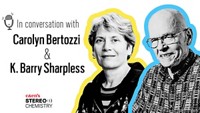
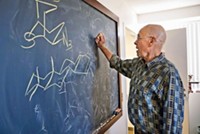
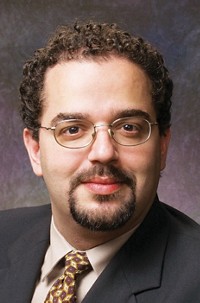

Join the conversation
Contact the reporter
Submit a Letter to the Editor for publication
Engage with us on Twitter